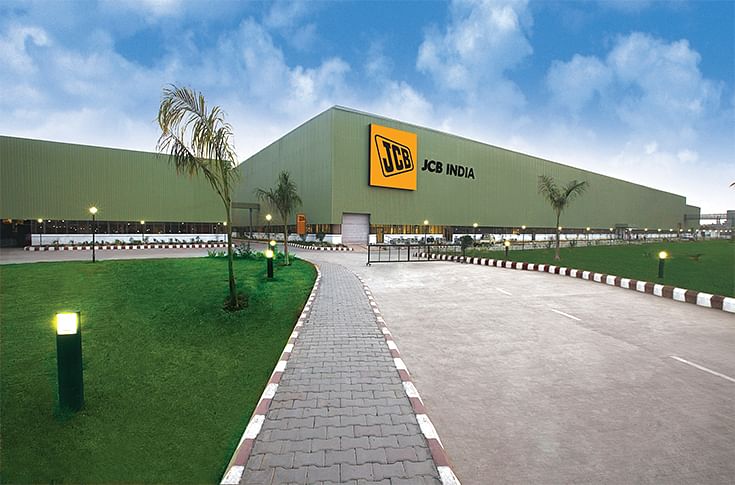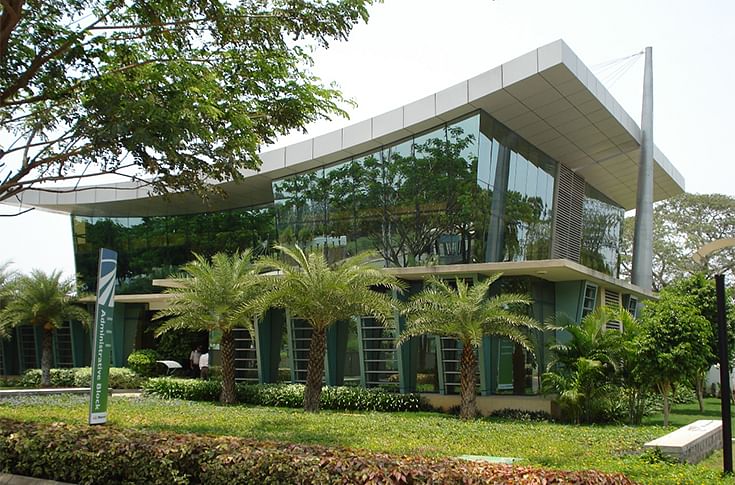SEZing the initiative
Special Economic Zones can be energetic growth drivers for the manufacturing sector. That’s what Sanjay Srivastava, Business Head, Mahindra World City, Jaipur and Director for ORIGINS Ahmedabad, tells us in a recent interaction.
When the Special Economic Zone (SEZ) policy first came into inception in India on April 1, 2000, the prime objective behind it was garnering foreign interests in the Indian market and subsequently providing a comprehensive platform for exports. Before 2000, SEZs were called as EPZs (Export Processing Zones) and Asia’s first EPZ was set up in Kandla in 1965. Through the SEZs, the government wanted to give domestic enterprises and the manufacturers the platform to compete globally.
Governed by a single administration, the goal of these SEZs was always to increase FDI, trade and exports, create jobs, ease of doing business, increased entrepreneurship and overall development of the country. According to the Ministry of Commerce and Industry, 416 SEZs have been formally approved, out of which 351 have been notified and 232 are operational. The total investment, as on 31 March 2019, is Rs 507,644 crore and the total employment it has generated constitutes 2,061,055 persons. Exports in 2018-19, as on 31 March 2019, were Rs 701,179 crore, a year-on-year growth of 21 percent.
These Special Economic Zones cater to the livelihood aspect of urbanisation and once the populace experiences a stable livelihood, the next need is a place to live in. This is where the residential zones come in its adjacent regions. A sizeable number of residents leads to the development of other amenities such as hospitals and schools, among other facilities, thus improving the overall standard of living in the region. With the philosophy of 3L - Livelihood, Living and Life, the Mahindra Group came up with the idea of creating cities that are liveable, inclusive and sustainable. This led to the idea of Mahindra World City (MWC), India’s first private SEZ.
Administrative Block, Mahindra World City, Chennai.
Master plan for sustainable cities
Set up 17 years ago, Mahindra World City in Chennai is India’s first certified IGBC Gold city. The Chennai segment was the first to host the IGBC for drafting the city certification norms because before that IGBC was only used to certify the buildings.
Mahindra World City is a vast 1,550-acre site with an 89:11 joint venture between the Mahindra Group and the government of Tamil Nadu. Today, it houses around 70 companies of which 60 are operational. Mahindra World City’s Chennai division houses Renault-Nissan’s Asia Pacific centre and also has Mahindra & Mahindra’s own R&D centre for automobiles, called MRV (Mahindra Research Valley), where the XUV 500 and TUV 300 were born. The 200-acre campus employs 45,000 people.
MWC Chennai has around 3,000 people residing in exclusive villas and 3-,2- and 1 BHK flats. The zone also has four-star hotels, a 30-bed hospital, service apartments, commercial complex, multiplex and a fully operational international school with another one coming up soon.

An aerial view of the amphitheater at eVolve , the GenNxt IT Park at MWC Jaipur.
Pink City’s economic blueprint
Mahindra World City Jaipur, which went operational 11 years ago, is a 74:26 joint venture between Mahindra Lifespaces and the government of Rajasthan. It is twice as big as the one in Chennai with 1,500 acres for multi-product SEZ, 1,000 acres of domestic tariff area (DTA) and about 450 acres of social and residential infrastructure. It is located off NH8 and within the DMIC (Delhi-Mumbai Industrial Corridor) influence zone.
Located on the Golden Quadrilateral, MWC Jaipur is said to be Asia’s first and world’s largest (by the population) project to receive C40 Climate positive development stage 2 certification. It is India’s first recipient of Gold pre-certification under the Green SEZ category. It is one of the 17 projects that originally signed up the Clinton Climate Initiative. Thus, as part of stage two, MWC, Jaipur, is said to have created a roadmap to be carbon-neutral.

BMW plant at MWC Chennai
In an exclusive chat with Sanjay Srivastava (pictured below), Business Head, Mahindra World City, Jaipur and Director for 'ORIGINS' Ahmedabad, we came to know that the then chief minister of Rajasthan, Vasundhara Raje, invited the Mahindra Group to sign an MoU in 2005 for developing the ecosystem for business houses. In 2008, Phase I went operational. Initiated with the goal of projecting the state of Rajasthan as more than a land of forts and historical places, Mahindra World City, Jaipur today has almost 90 clients with almost 55 of them operational and employing 11,000 direct and 25,000 indirect staff.

Sanjay Srivastava, Business Head, Mahindra World City, Jaipur.
According to Srivastava, the exports from the Jaipur division is clocking at Rs 1,200 crore per annum. Srivastava observes, “Rajasthan has a lot of small entrepreneurs and what has worked well here is that there is a lot of small and mid-size businesses who want to be a part of this world city and further establish their credibility.”

The JCB plant at MWC Jaipur
JCB has set up its second-largest plant in the world in Jaipur, after the one in the UK. Jaipur has the Brazilian company, Perto, which is its only 100 percent FDI outside Latin America. Triumph is doing contract manufacturing here.
Talking about some of its high-profile clients at Jaipur, Srivastava says, “JCB initially set up a plant in Faridabad and then two small units in Pune. Later, they drew up an expansion plan for Rs 500 crore for which many Indian states had rolled out their red carpets. But JCB chose to invest it in MWC, Jaipur, even though we (Mahindra & Mahindra Group) are competitors in one or two segments, especially in the heavy engineering machinery. Their choice was squarely based on the fact that we create the complete ecosystem -- the road, water, sewer, electricity and so on. This plug-and-play model enabled JCB to go operational from the first process of construction in just 322 days.”

Metlife office building at MWC, Jaipur
Such huge investments and high profile clients have attracted a number of auto ancillaries like Ind Auto, Sri Krishna Maruti, Maxop Engineering, Manu Yantralay, Ball Corporation and many others. Thus, it has evoked the interests of other auto industry giants towards investing in Jaipur.
A global platform for local players
These two MWCs has inspired the creation of two smaller world cities under the brand of ‘Origins’. This is the second part of Integrated Cities and Industrial Cluster (IC&IC) and is more aligned to serve local manufacturing. There is one Origins in North Chennai which is a 60:40 partnership with the Sumitomo Corporation. Yanmar Engines, one of the biggest engine manufacturers based out of Japan, has set up their manufacturing hub here after being present in India for the past 15 years through sales and distribution. The second Origins is in Ahmedabad, on the Ahmedabad-Rajkot corridor, and is said to be beneficial for auto ancillaries.
Talking on the future of the Indian manufacturing scene, Srivastava comments, “Some of the initiatives that were declared by some of the previous governments should be turned into policies. We are in talks with NITI Aayog and have brought to their notice that upcoming large investments should be directed towards the fully developed regions instead of spending on green fields which consumes more time and capital. Industrialists are not looking for the cheapest land. They are looking for a plug-and-play model which guarantees the shortest time to market and thuse gives the fastest return on investment.”
His advice to the new prospects in India is that if an ecosystem has to be an accelerator, then it should be in a high-growth corridor. It should have easy access to domestic and international markets and have a good mix of national and state support. Always go for a clean land title with ready-to-go infrastructure, is his parting advice to investors.
RELATED ARTICLES
Magnets of Disruption: How China’s Grip on Rare Earths Is Stalling India’s EV Dreams
As China tightens its grip on rare earth exports, Indian automakers risk delayed launches, disrupted festive season prod...
HYUNDAI CRETA EV: Off to a Slow Start
Hyundai has priced the electric version of its massively popular SUV close to the Rs 20 lakh range, where it has been fo...
Ashok Leyland Aligns Sustainability Goals With Business Operations
Ashok Leyland is embedding sustainability deep into its operational strategy, leveraging green finance, electrification,...





 By Autocar Professional Bureau
By Autocar Professional Bureau
 05 Aug 2019
05 Aug 2019
 31638 Views
31638 Views






 Prerna Lidhoo
Prerna Lidhoo



 Shahkar Abidi
Shahkar Abidi

